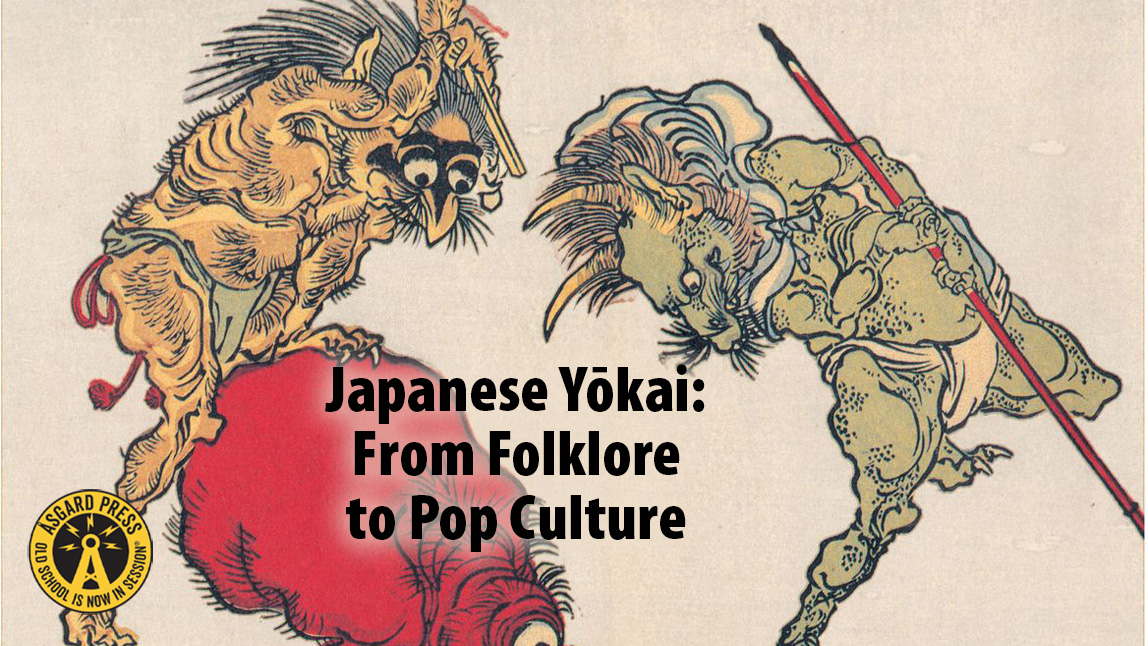In the land of the rising sun, there are numerous tales of monsters, spirits, and supernatural phenomena…strange beings known as yōkai. Though most commonly described as Japanese demons or monsters, the story of the yōkai contains much more than that. Join us as we discuss what these mysterious beings are, the many stories they have inspired, and their evolution into modern pop culture such as video games, movies, anime, and manga.
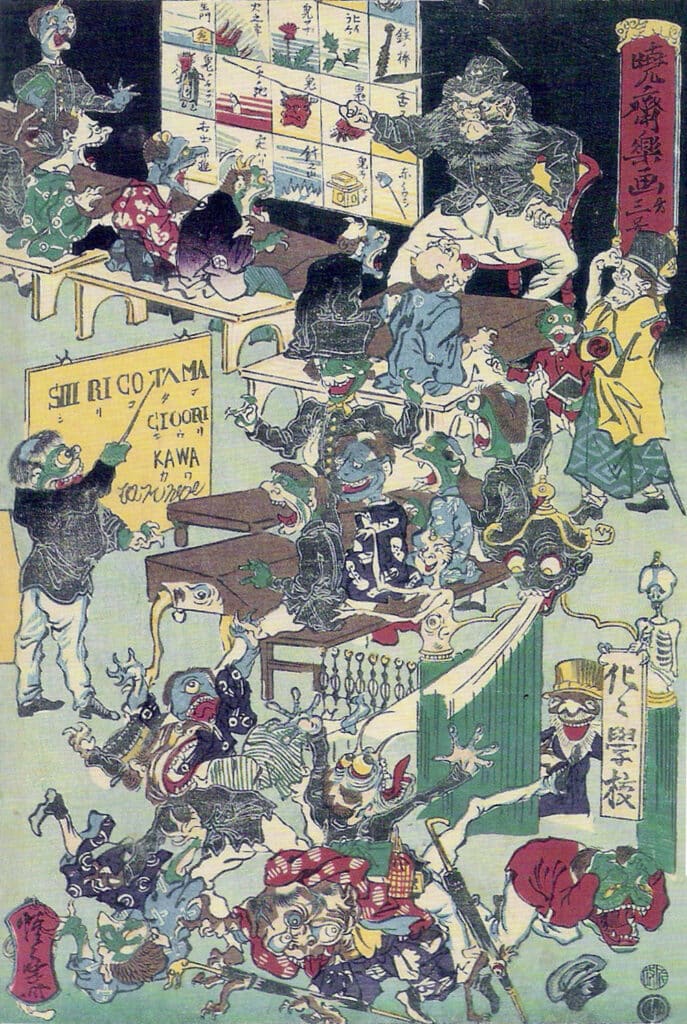
What is a Yōkai?
Yōkai are mysterious supernatural phenomena and creatures found in Japanese folklore. The word is derived from the kanji 妖 (yō) meaning bewitching, attractive, and calamity, and 怪 (kai) meaning mystery and wonder. In English, it is often translated into many different terms, including demon, monster, or spirit, though the word encompasses all of that and more. In short, yōkai is a catch-all term for all of Japan’s spooky and wacky phenomena.
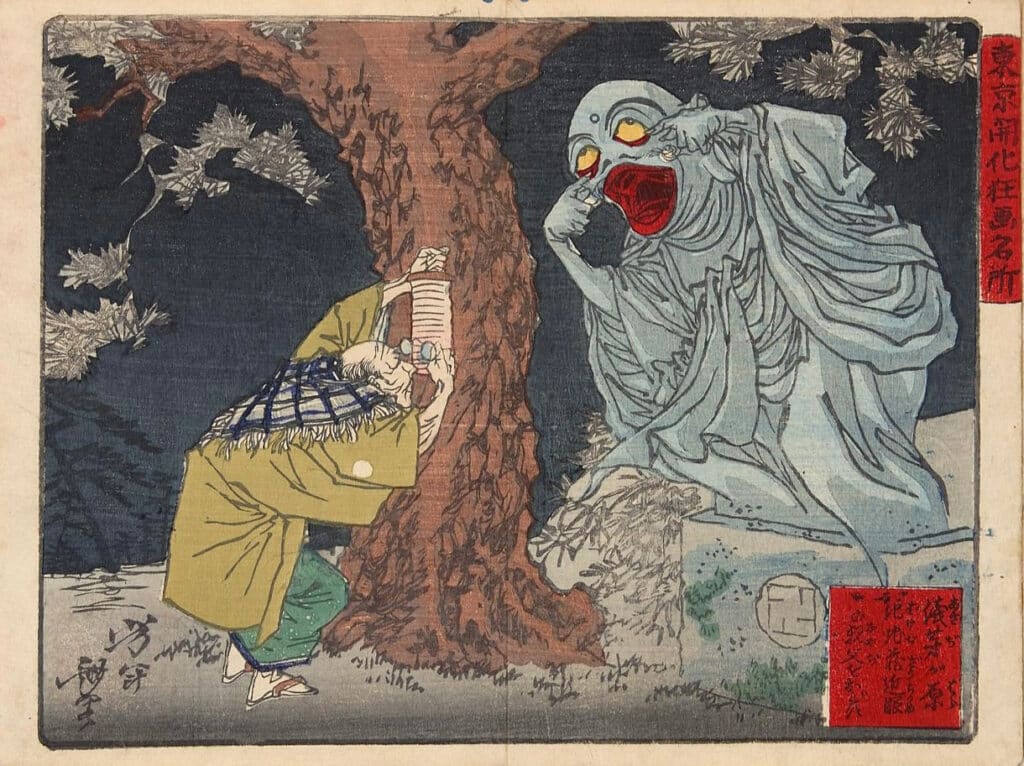
Yōkai Through the Ages
Japanese folklore has never been a single tradition. It is instead an amalgamation of different traditions, dating back to when small tribes populated the small island nation. Each region created its own individual folklore, gods, monsters, and other various mythical creatures. The oldest recorded histories of Japan date back to the 8th century from The Kojiki (Record of Ancient Matters), a chronicle of legends, oral histories, creation myths, and more. Various stories of differing perspectives across time are cataloged, and contain the earliest records of the gods, monsters, and yōkai of Japanese folklore.
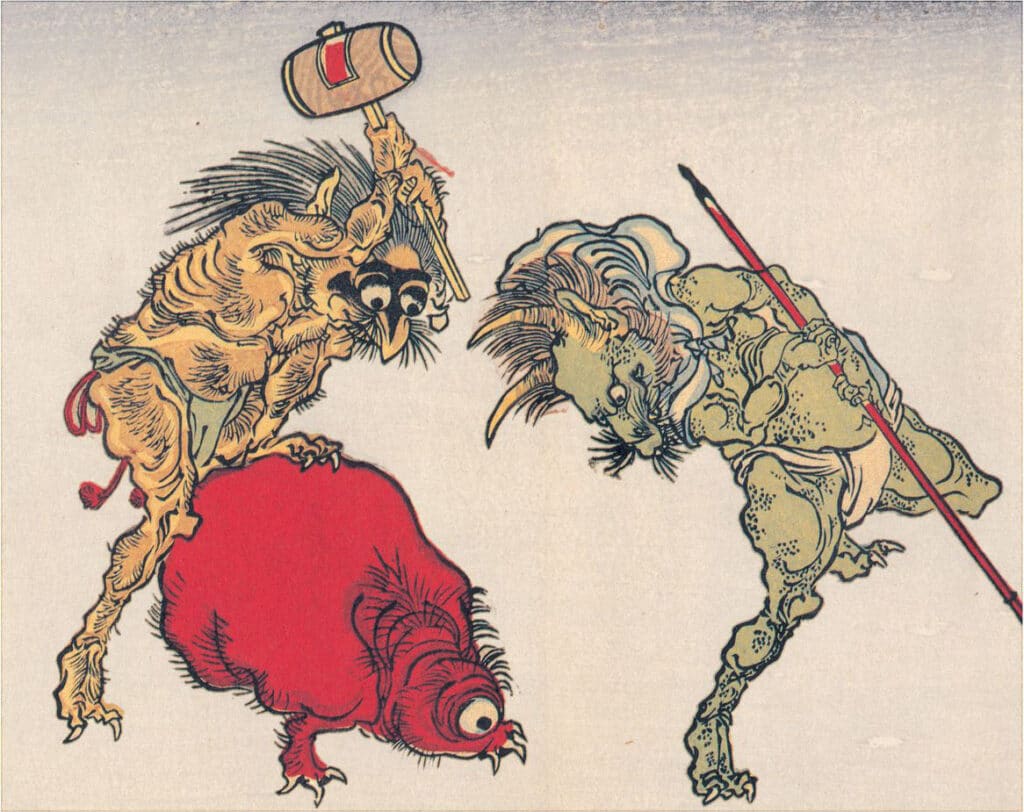
The golden age of yōkai storytelling was the Edo period (1603-1868), a time of unprecedented peace and prosperity in Japan. This was a time when interest and achievements in Japanese art, literature, and drama flourished, and when interest in ghost stories and the supernatural experienced massive popularity all over the country. Yōkai storytelling was incorporated into many aspects of Japanese culture, from artwork to theater shows, and found itself present in woodblock prints, kabuki theater, puppet theater, and many more forms of art during this time.
So popular was yōkai storytelling during the Edo period that folklorists and artists began researching folklore and traveling the country, cataloging and populating their yōkai encyclopedias and bestiaries. By far the most famous of these individuals was Toriyama Seiken (1712-1788) who amassed a massive collection of yōkai imagery and stories from all over Japan that may have otherwise been forgotten and lost to time.
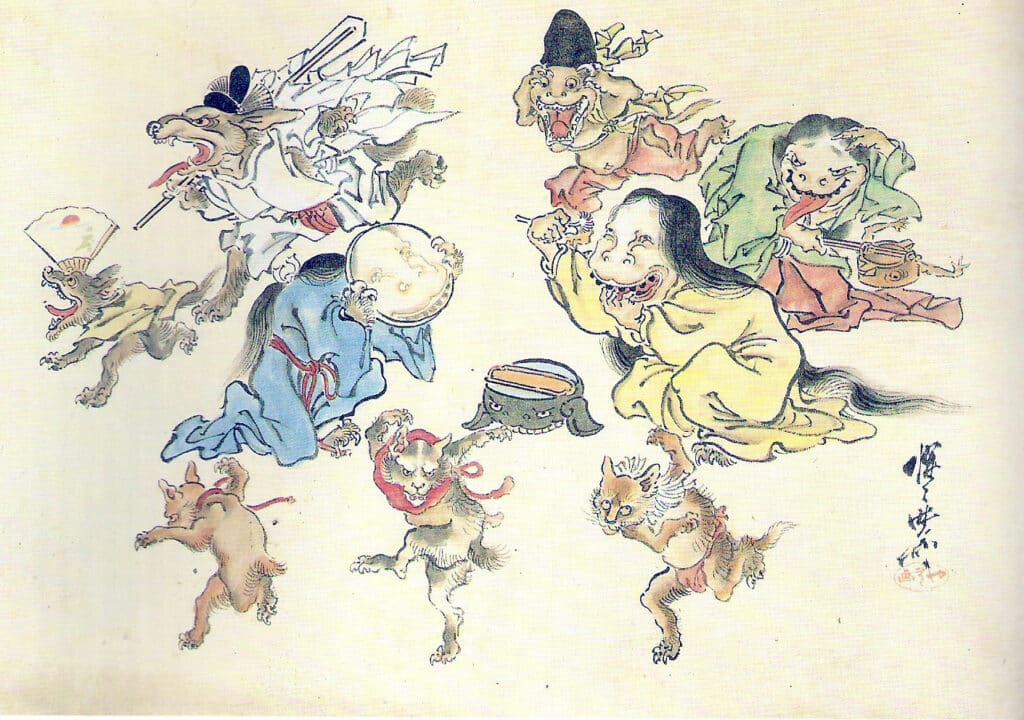
Yōkai fell out of popularity and nearly disappeared following the Edo Period into the Meiji Period (1868-1912), a truly turbulent time in Japan. The nation was swept up in a craze for modernization, and their passion for the supernatural was replaced with scientific reasoning and logical thinking. Notably, a philosopher and reformist named Inoue Enryō studied many different yōkai stories and mysterious phenomena with the goal of debunking superstitions and providing a rational and scientific explanation for each of them. As Japan focused their efforts on their ever-growing military and later plunged into the horror of World War II, yōkai were abandoned, seen as a relic of the past and an embarrassing aspect of their cultural history.
In the years following World War II, manga artist Mizuki Shigeru (1922-2015) rediscovered the yōkai and re-introduced them to a new Japanese audience. Inspired by yōkai stories he had heard as a boy, Shigeru began work in the newly established manga, or comic and graphic novel industry. His graphic novel series GeGeGe no Kitaro was incredibly popular, especially with children, sparking renewed cultural interest in yōkai and inspiring others to create their own works centered around yōkai and the supernatural. Today, the influence of yōkai and their stories can be seen in many aspects of Japanese culture, including mascots, video games, anime, and manga.
Popular Traditional Yōkai and their Appearances in Modern Anime, Media and Video Games
Depictions of yōkai have evolved over many years and their appearance, personality, and purpose in any given narrative change all the time depending on the writer telling the story and the artist creating the artwork. This section will cover some of the more well known or popular types of yōkai and some examples of them in modern media, anime and video games.
Kappa
Translation: River Child
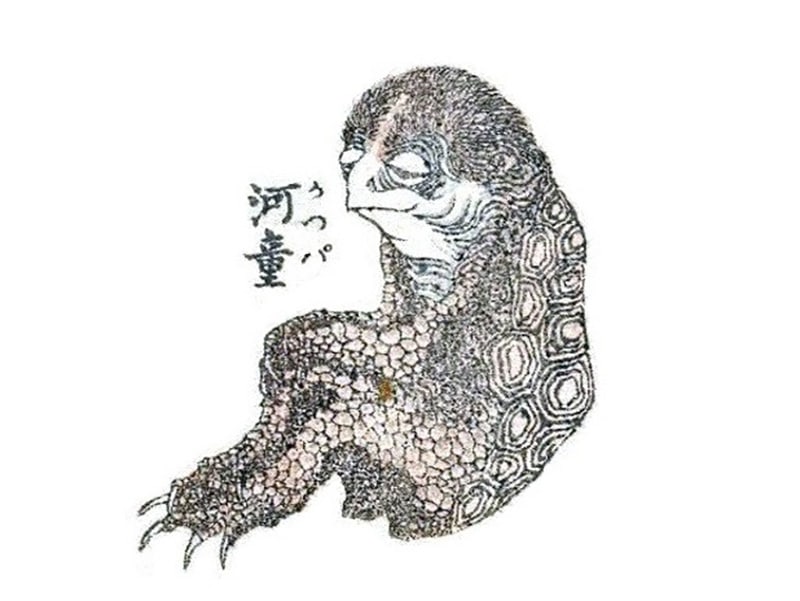
The Kappa are aquatic, reptilian creatures with a large yellow beak, somewhat resembling humans, that inhabit rivers, streams, and waterways throughout Japan. Many stories involving Kappa depict them as malicious beings that kidnap and drown humans traveling near or swimming in water. Kappa are also known to target and remove a mythical organ called the shirikodama, said to contain the soul of a human, through the victim’s nether regions. In order to pacify the Kappa, humans offer cucumbers at riverbanks, said to be one of the Kappa’s favorite foods. They’re also known to enjoy sumo wrestling. Stories of Kappa were often told to children as a means of dissuading them from playing in rivers or streams for fear of them drowning.
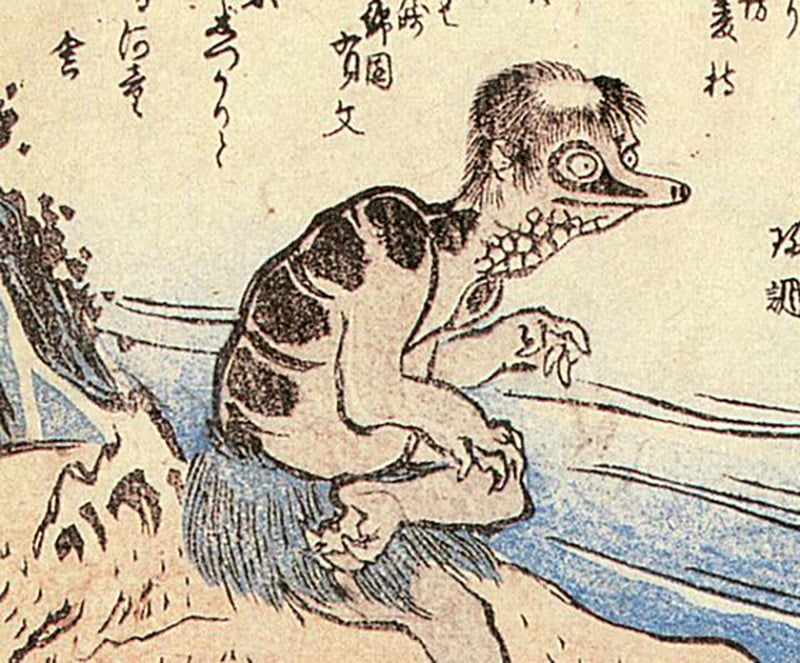
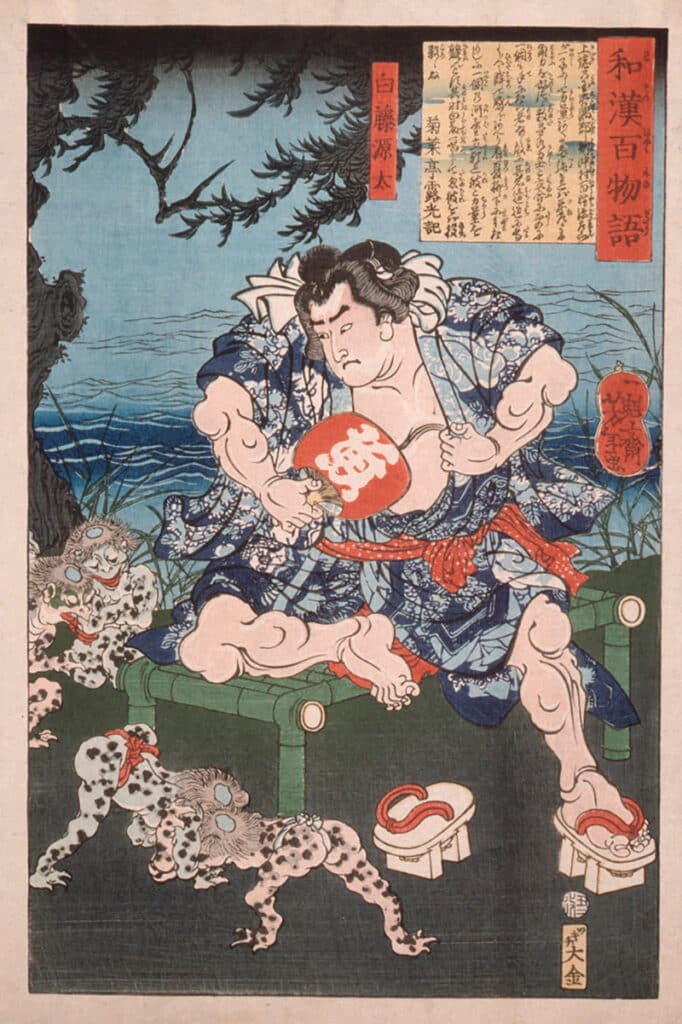
Perhaps the most distinguishable characteristic of the Kappa is the dish-like object that sits atop their heads. This dish is the source of their power and must be filled with water at all times. Should the water ever run out, a Kappa will be left powerless, unable to move, and may even die.
Some examples of Kappa in modern media include:
Lotad (Pokémon card game and anime): Lotad is a Pokémon most likely based on the Kappa, as evidenced by its yellow beak and the water-filled dish atop its head. Unlike traditional folklore Kappa, Lotad do not die if their dish is emptied. According to their appearance in the Pokémon anime, Lotad are peaceful and kind creatures, with the most malicious of its actions being to spray water on humans.
Nitori Kawashiro (Touhou Project video game): From the widely popular “bullet hell” series Touhou Project, Nitori is one of the game’s Kappa, though she has the appearance of a traditional human female with blue hair and is always seen wearing a green cap. She’s very shy, but good natured, only fighting the main heroine due to the desire to scare her off the dangerous mountain they were on. She also enjoys using her engineering skills to build unique contraptions, quite different from the sumo wrestling loved by traditional Kappa. Just like Kappa in folklore, Nitori loves cucumbers.
Kappa (Natsume’s Book of Friends manga and anime series): Natsume’s Book of Friendsfollows Takashi Natsume, a high school student with the ability to perceive yōkai. Many different types of yōkai appear throughout the show, with an unnamed Kappa being one of its recurring characters. Natsume often encountered this Kappa when the creature needed more water in his bowl, and as thanks, helped Natsume with whatever he could. The Kappa is a very helpful creature in the anime show and though it has the typical appearance of a Kappa in folklore, it is drawn in a much more innocent looking and kid friendly way.
Kitsune
Translation: Fox
Kitsune are wild foxes found across Japan. In folklore, Kitsune wield immense magical power, intelligence, and have the supernatural ability to shapeshift, beguile, and charm other life forms. The most defining characteristic of kitsune are their many tails, with some having as many as nine tails. The older, wiser, and stronger a kitsune is, the more tails it will have.
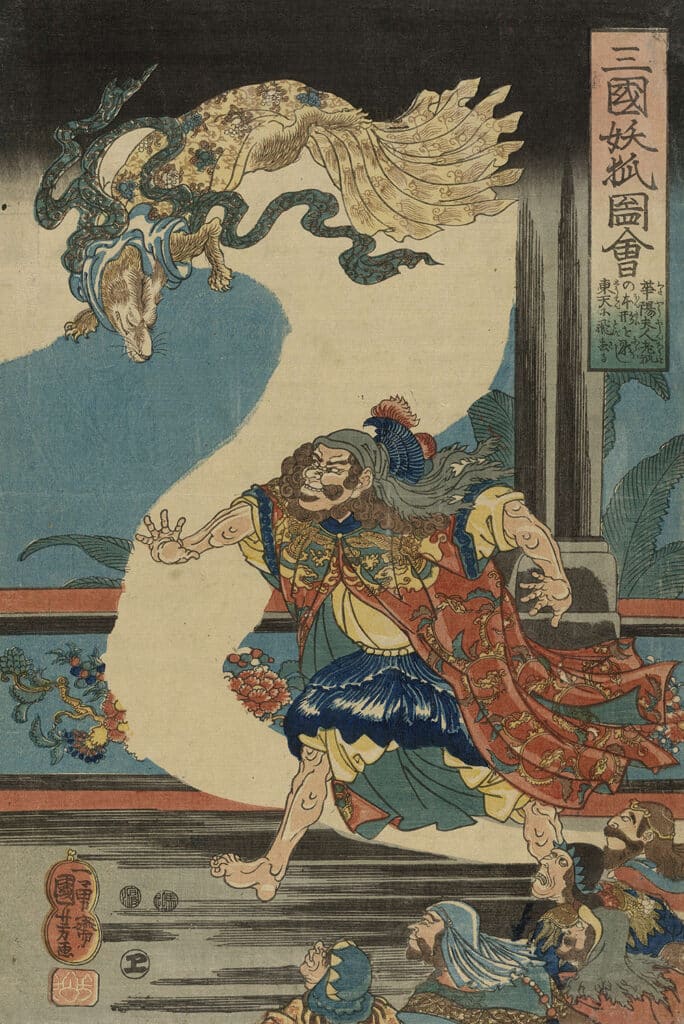
There are primarily two types of Kitsune: the protective holy foxes and the malevolent wild foxes. Holy foxes are servants of the Shinto deity Inari, with shrines dedicated to Inari being filled with kitsune imagery. These kitsune protect humans, ward off evil spirits, and give good luck. Wild foxes, on the other hand, are mischievous tricksters that delight in mischief, pranks, and evil. These kitsune tend to harass humans by a variety of means, such as by transforming into giant monsters, stealing personal items, and creating illusionary sounds and smells. Kitsune are also skilled enough to shapeshift into exact copies of humans and have been known to transform into beautiful women in order to trick men. Some of these kitsune even settle down and have families with the humans they infatuate.
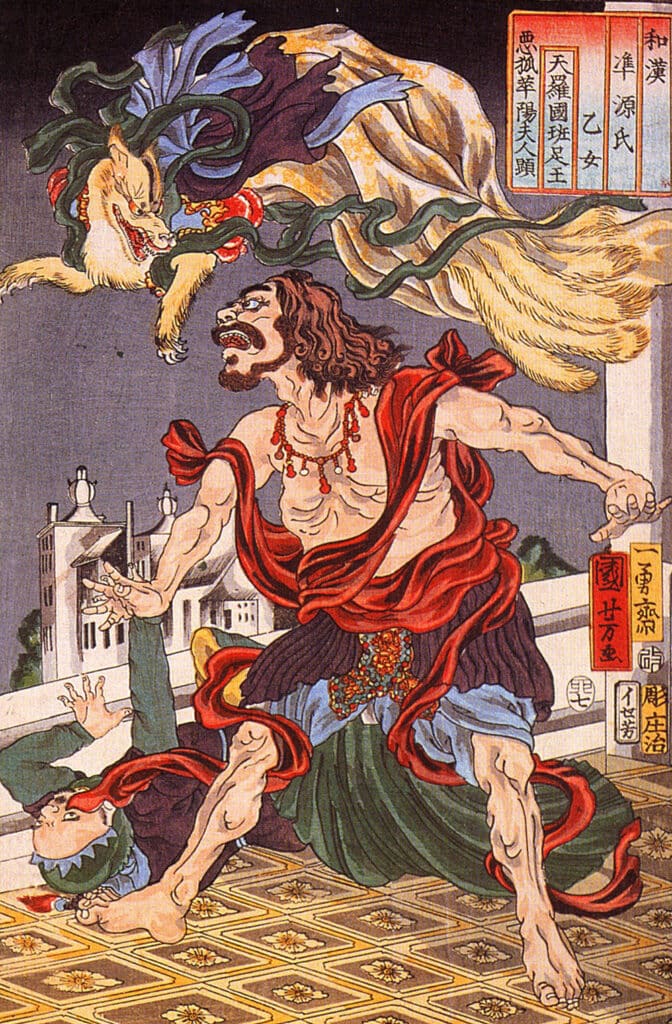
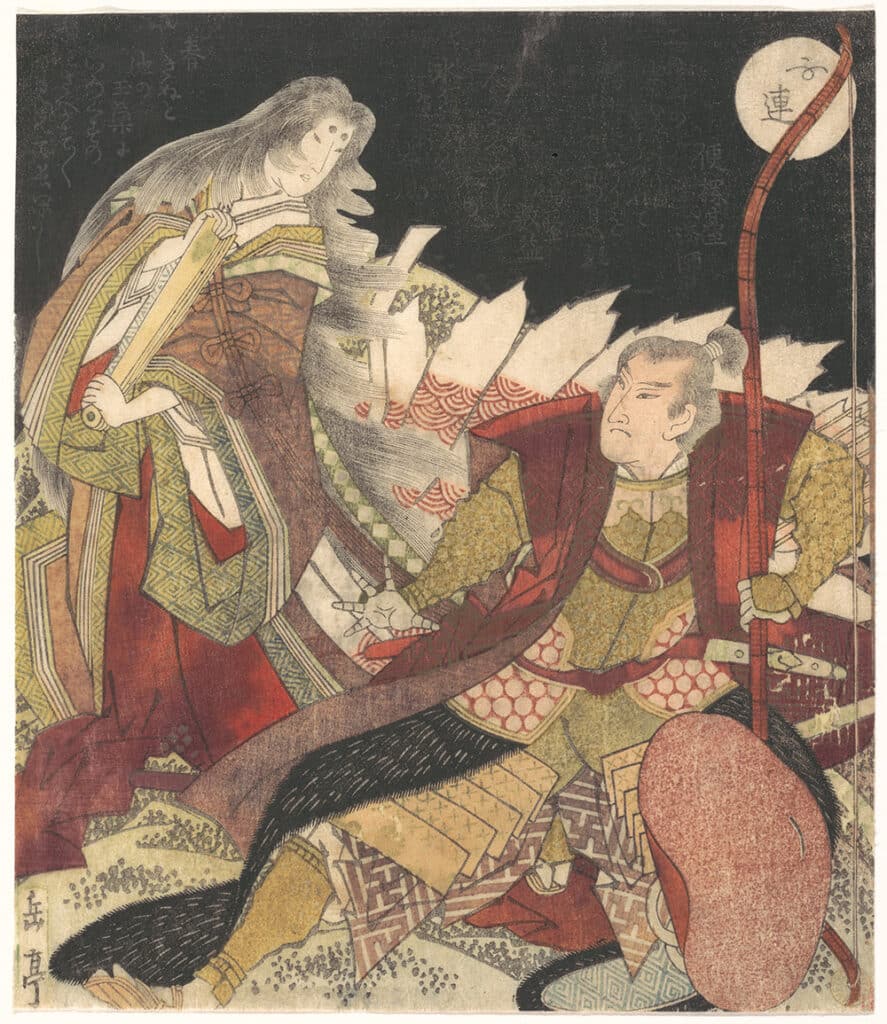
Some examples of Kitsune in modern media include:
Yoko Kurama (YuYu Hakusho manga series): Yoko Kurama is a demon fox (kitsune) who is renowned as a master thief and legendary bandit in the Demon World. After being critically wounded after a heist gone wrong, he put his spirit in the body of an unborn human child to survive and was reborn as the human Shuichi Minamino. Just like kitsune in folklore, Kurama is fiercely intelligent, able to think three to four steps ahead of his opponent with ease. In his demon form, Kurama possesses long flowing hair, prominent fox ears, and a tail. Kurama as a demon would align more with that of a wild fox, as he is cruel, sadistic, and enjoys toying with his opponents.
Ninetales (Pokémon card game and anime): Ninetales is a fox-like Pokémon that possesses nine tails, hence its name. It very clearly resembles that of a nine-tailed kitsune and also possesses other folklore aspects, such as its long lifespan and supernatural abilities, particularly its abilities to manipulate and breathe fire.
Senko (The Helpful Fox Senko-San web manga and anime series): Senko is an 800-year-old kitsune and demigod who moves into the apartment of a young, overworked Japanese computer programmer, sent by the spirit world to provide support for his utterly terrible and unhealthy way of living. She cooks, cleans, and provides emotional support. Though small and petite in appearance, Senko still possesses notable fox ears and a big fluffy tail that the main character appreciates. Senko is more aligned with that of a holy fox, as she is sent from the spirit world and goes out of her way to help humans and provide generous support.
Kiriko (Overwatch 2 video game): Though not a kitsune herself, Kiriko is bonded to a Fox Spirit, which according to her can “block bullets and balance your blood sugar.” As a warrior, Kiriko is skilled with kunai, a Japanese multipurpose tool and weapon, and possesses strong healing abilities with her ofuda, or talisman. When activating her ultimate ability, called Kitsune Rush, Kiriko summons forth the Fox Spirit, accelerating her and her allies’ movement, attack speed, and cooldowns for a brief period of time.
Tanuki
Translation: Also called Tanuki in English, but sometimes called Raccoon Dog
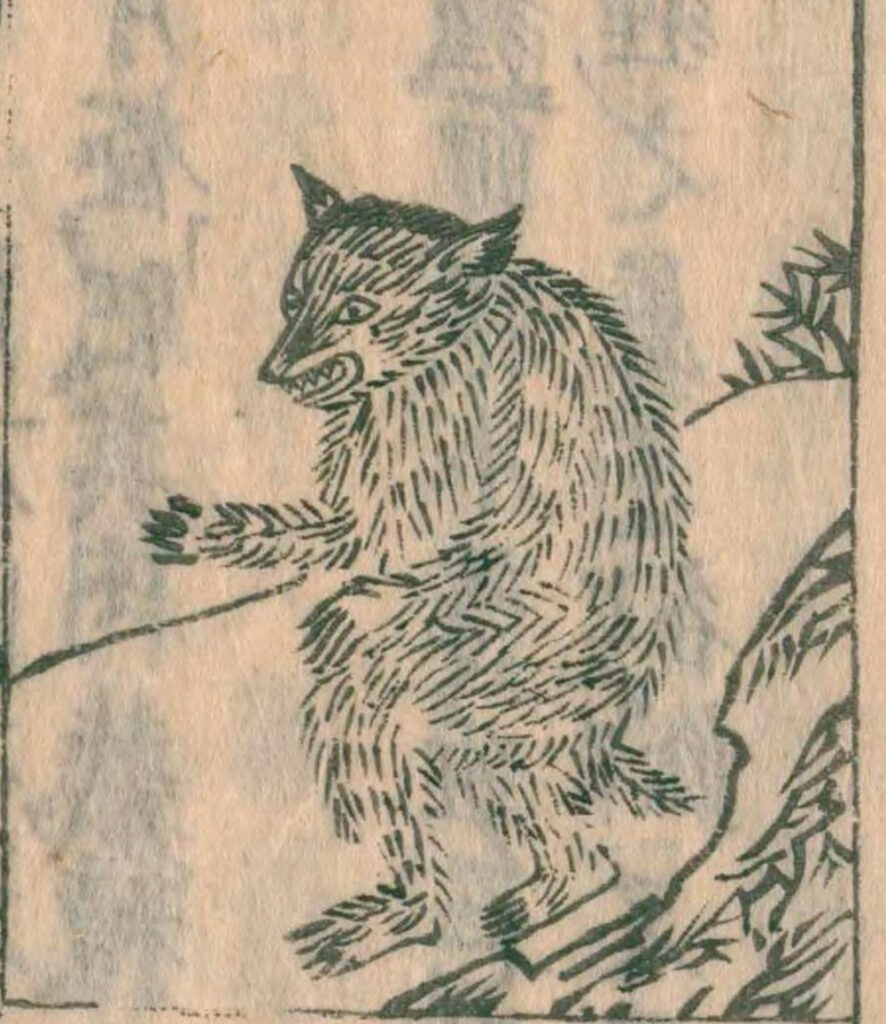
Tanuki, sometimes referred to as Raccoon Dogs in English, are shy, nocturnal animals that resemble a raccoon or badger. In folklore, tanuki have the supernatural ability to shapeshift into objects or people by placing a leaf atop their head, similar to the kitsune. Most tanuki are jovial in nature and enjoy the company of humans, though they do still behave as mischievous tricksters that love to trick and steal from humans. Before Buddhism became popular, tanuki in certain areas of Japan were revered and held in the highest regard for their abilities.
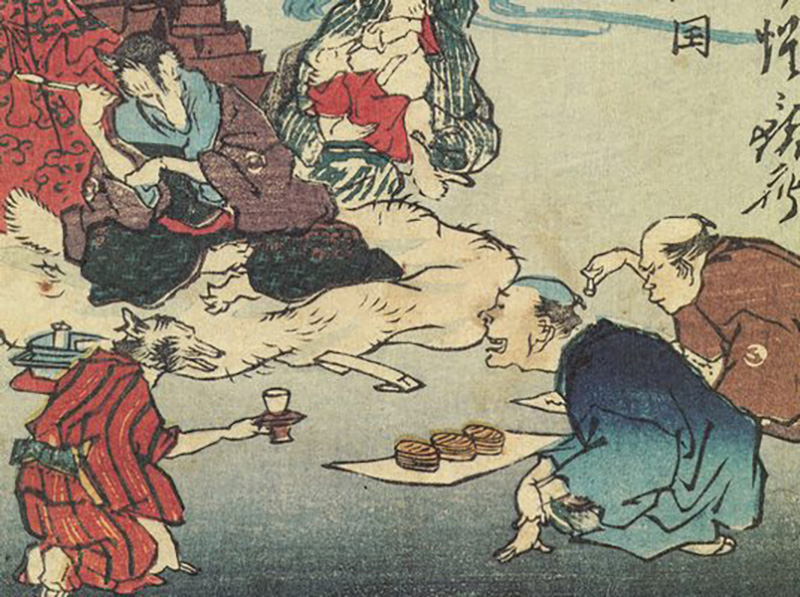
The most notable, and perhaps weirdest, characteristic of tanuki are their ability to shapeshift a magical, and sensitive, part of their bodies, adapting it to whatever they need. This anatomical transformation can be used for just about anything, including objects like drums and umbrellas, and can even transform into entire shops. Tanuki often incorporate this body part into their shapeshifting disguises, allowing them to become whatever they want.
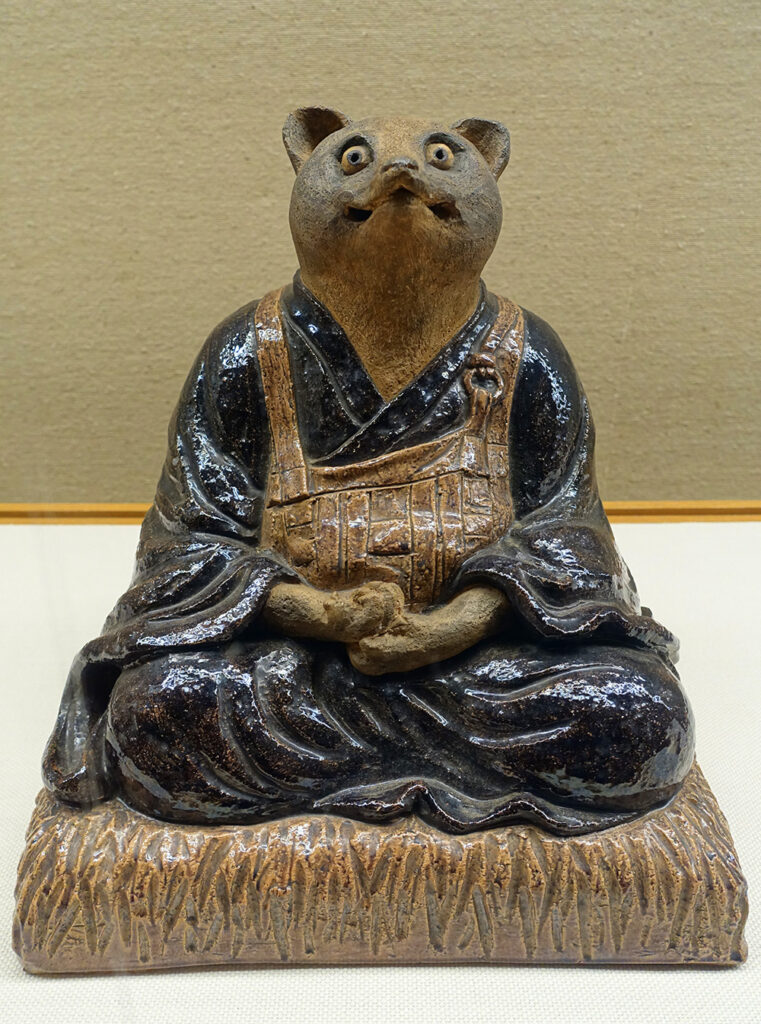
Some examples of tanuki in modern media include:
Tanooki Suit Mario (Super Mario Bros video game): In certain Nintendo Mario games, the character Mario can wear what is called the tanooki suit, which gives him the appearance of a tanuki. The suit allows Mario to fly and attack enemies with tail swipes. In the game, the power-up icon looks like a leaf, which is based on the mythology of tanuki using leaves to transform.
Tom Nook (Animal Crossing video game): Tom Nook is a tanuki who provides useful services and plays an important role in the Animal Crossing series, an open-ended life simulator game about a player taking up residence in a town where all the occupants are animals. In some games he serves as a shopkeeper, selling useful items to the players, while in others he works in real estate, offering services for the player’s house.
Pom Poko: Pom Poko is a 1994 Studio Ghibli movie about a group of tanuki whose homes in the forests are being threatened by suburban redevelopment projects occurring on the outskirts of Tokyo. The tanuki lead a resistance against the humans, utilizing their shapeshifting abilities to fight back. Remember the malleable yet sensitive body parts? If you watch this, get ready for them to use them all the time, and don’t say we didn’t warn you!
Oni
Translation: Most often translated as Demon, Troll and Ogre
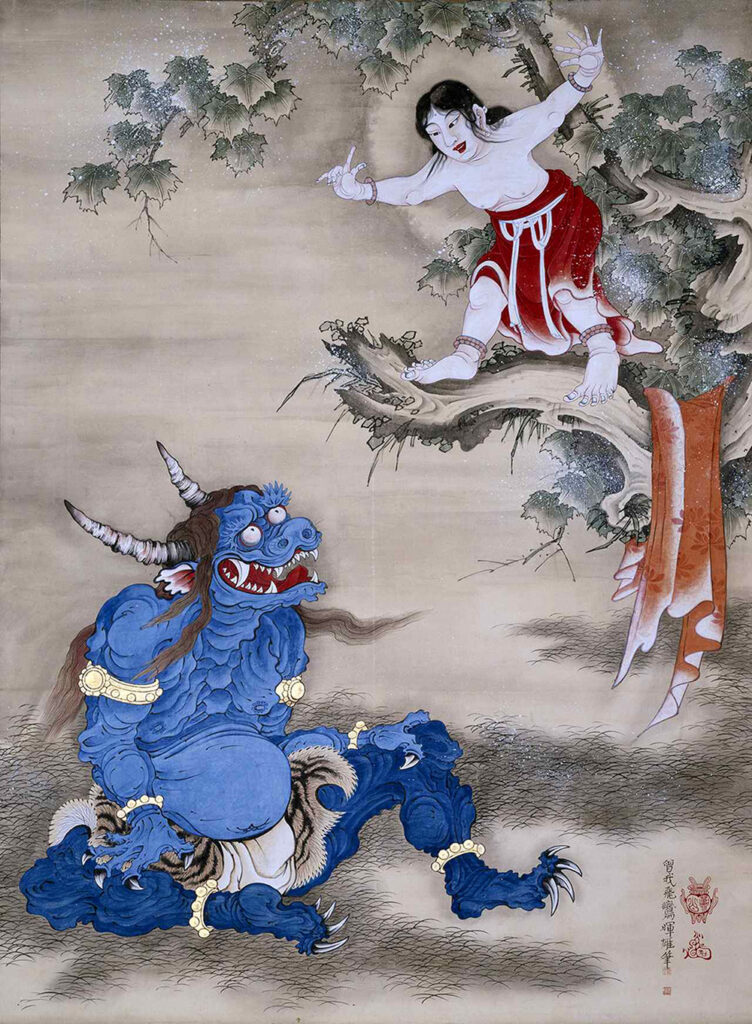
Oni are perhaps one of the most iconic yōkai in Japanese folklore. Though these creatures are large, intimidating, strong, and often brutish, many oni are also skilled magic users and sorcerers and are sometimes portrayed as more much more intelligent than western trolls and ogres. In terms of appearance, oni are most commonly depicted with red or blue skin, horns, and fang-like tusks, though many variations exist with different skin colors and number of fingers, toes, eyes, and horns. Oni also wear loincloths made of animal pelts and wield huge bludgeoning weapons, the most common being iron clubs called kanabō.
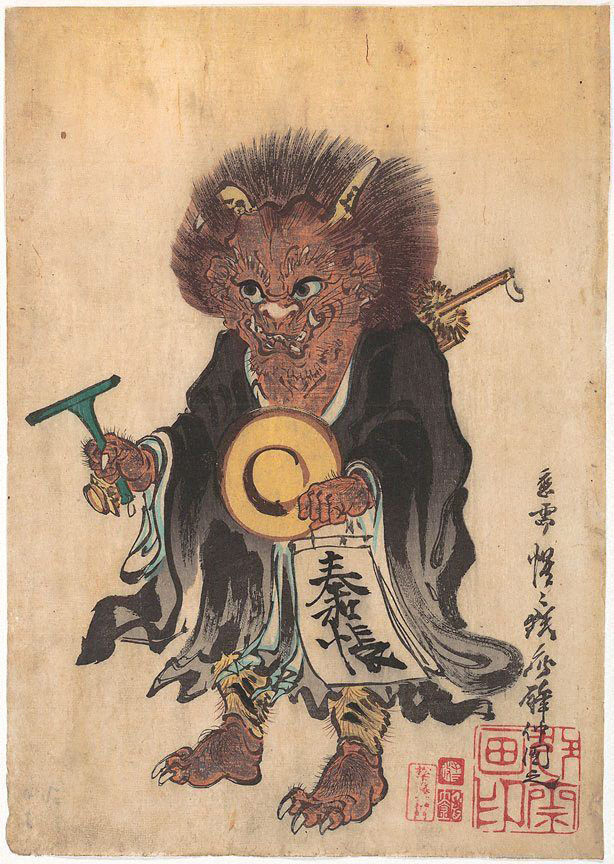
Oni are born when truly evil humans die and are sent to one of the many Buddhist hells to become servants of King Enma, the ruler of hell. The oni’s job is to deliver painful torture and punishment to other wicked humans, but who were not wicked enough to become oni themselves. Some torture methods include frying the damned in a massive frying pan, crushing their bones, and slowly peeling off their skin. Other oni are born when a human is so utterly evil and devoid of redemption that they become an oni before dying. These oni then go on to kill and terrorize the living world for the rest of their remaining days.
Some examples of oni characters in modern media include:
King Yemma (Dragon Ball media franchise): King Yemma is the king of all ogres and based on King Enma, the ruler of hell. A line of souls leads to his office in the afterlife where he decides whether a soul is deserving of heaven or hell. Though oni in folklore are indeed tall, King Yemma is absolutely colossal in size, towering over any other character he’s shown with, and he dresses quite fashionably, sporting a suit and tie. He’s also powerful, intelligent and has a hilariously twisted sense of humor, shown when he sent a few notable villains to heaven because he believed they’d enjoy hell a bit too much. Yemma also possesses a pair of horns and red colored skin.
Arataki Itto (Genshin Impact video game): In the Genshin Impact video game, oni are native to the Inuzama region. There were once tribes of red and blue skinned oni, but years of reproducing with humans gave them increasingly human features. The game character Itto is a descendant of the crimson oni and wields a club resembling that of the kanabō. Though very human looking, he still possesses extreme strength and a pair of horns. While not evil like the oni in folklore, he still has the reputation of a delinquent and has his own gang, though its members aren’t bad people. He also fears beans, incidentally.
Kazan Yamaoka – The Oni (Dead by Daylight online multiplayer game): Game character Kazan Yamaoka, better known as The Oni, was a samurai who viciously murdered who he called “fake samurai,” farmers and peasants who posed as samurai. After the lord of a town cursed Yamaoka by calling him Oni-Yamaoka, he traveled to the town and murdered the lord, along with his own father while on the way there. The local townspeople then murdered Yamaoka in revenge, dragging his body to a stone mill. Upon returning, the townspeople discovered that the body was gone and only a black mist remained. As a killer, Yamaoka wields the iconic kanabō and is fueled by rage and bloodlust.
The ancient folklore of Japanese yōkai lives on today through references throughout pop culture, such as movies, graphic novels, anime television shows, and video games. New generations participate in a celebration of the past, and of Japanese culture, every time they play, read or watch this media. The next time you see a stack of Pokemon cards, or catch a few minutes of anime, keep your eye out for some of these mysterious and spooky mythological creatures!
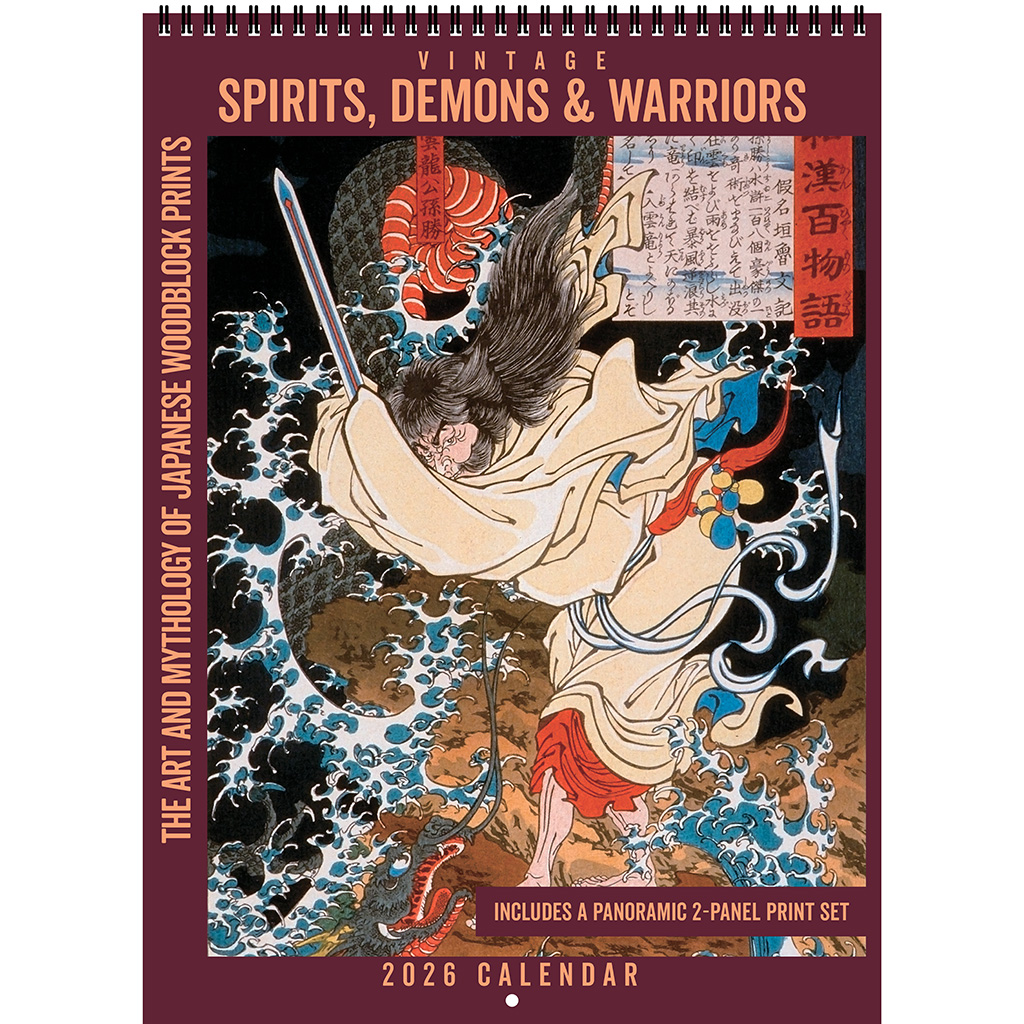
If you find yōkai as fascinating as we do, then you’ll love our 2026 Vintage Spirits, Demons, and Warriors Deluxe Calendar, featuring 13 frame-ready prints of Japanese woodblock prints featuring all kinds of yōkai.
This article was contributed by Max McKamey, BA History, West Chester University.

